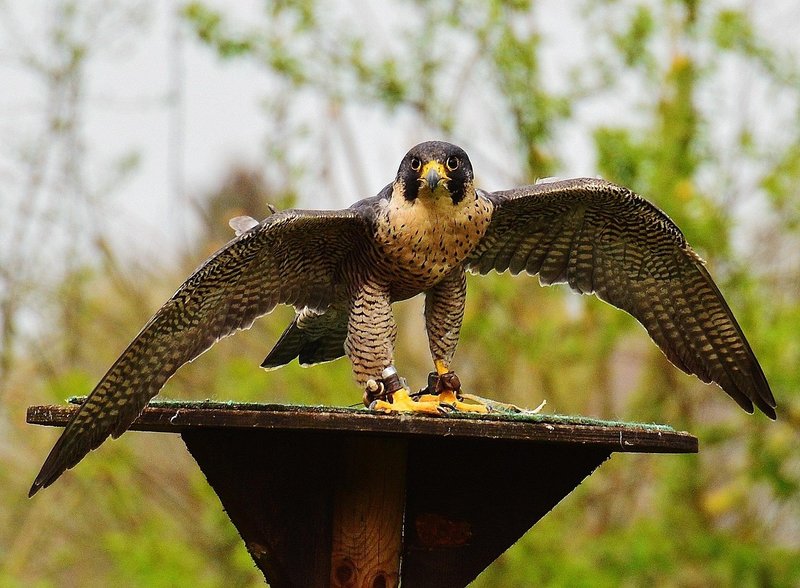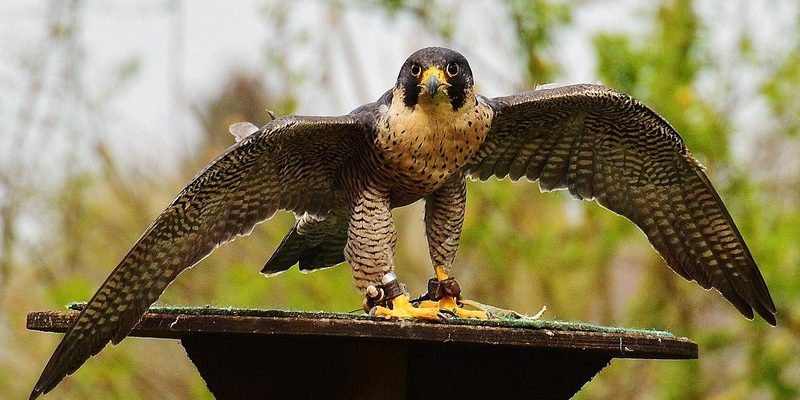
There are various types of falcons, but the Peregrine Falcon deserves a special mention. Known as the fastest bird on the planet, it can dive at speeds of over 240 miles per hour. Just think about that for a second. That’s faster than a Formula 1 car! This article will explore ten eye-opening facts about falcons that just might change the way you view these magnificent birds.
1. Master of Speed
Falcons are often celebrated for their incredible speed. The Peregrine Falcon holds the record for the fastest animal on the planet. When it goes into a dive, it can exceed speeds of 240 miles per hour. To put that into perspective, that’s faster than a cheetah can run! How do they achieve this? Their bodies are designed for speed, with a streamlined shape and special wing structures that allow for quick acceleration.
In addition to speed, falcons are also excellent at maneuvering. They can quickly change directions mid-air to catch their prey—usually smaller birds—making them lethal hunters. Imagine being so fast that you could dodge traffic on a busy day; that’s how agile these birds are.
2. Exceptional Vision
Another intriguing aspect of falcons is their superior vision. Their eyesight is estimated to be 8 to 12 times stronger than that of humans. They can spot a tiny rabbit from several miles away, which is crucial for hunting. Their eyes are specially adapted to see in different wavelengths, giving them the edge in spotting prey even in harsh lighting conditions.
How do they do it? Falcons have a special layer of cells in their eyes called the fovea, which allows them to see greater detail. This means they can lock onto their target well before they even get close, making their hunting skills incredibly effective.
3. Unique Hunting Techniques
Falcons employ a variety of hunting techniques, depending on the species and environment. Some prefer to dive from high altitudes, while others may hunt more stealthily, weaving through trees to catch their prey off guard. For example, the Merlin Falcon is known to engage in a series of quick, agile maneuvers through brush and trees in pursuit of smaller birds.
The hunting process usually begins with a careful watch from a high perch. Once they’ve spotted their target, they go all out! They can dive and swoop at remarkable speeds to surprise their prey, often catching them mid-flight. Talk about a dramatic lunch!
4. Social Creatures
While many might think of falcons as loners, these birds actually exhibit interesting social behaviors. During the breeding season, some species, like the Prairie Falcon, can be seen nesting in loose colonies. They have been observed engaging in social displays and even sharing hunting areas with other falcons.
If you’ve ever watched a group of falcons engage in aerial acrobatics, you’ll notice they communicate through a series of specific calls and movements. It’s like they’re having a conversation without words!
5. Diverse Species
Did you know there are around 40 species of falcons worldwide? These range from the small, agile Hobby Falcon, which is about the size of a sparrow, to larger species like the Gyrfalcon, which can weigh up to four pounds! Each species has unique adaptations and behaviors suited to its specific environment, whether it’s desert, forest, or urban areas.
This diversity makes falcons a fascinating group of birds to study. Their habitats can vary widely, and their survival strategies are equally diverse. Whether you’re in the mountains or by the coast, there’s likely a falcon nearby, adapting to its surroundings.
6. Nesting Habits
You might be surprised to learn that falcons don’t build traditional nests. Instead, they often lay their eggs on cliff ledges or in tree hollows. Some species, like the Peregrine Falcon, have even adapted to nesting on skyscrapers in urban areas, finding ledges that mimic their natural habitats.
These nesting spots are chosen carefully. The height provides safety from predators, and the vantage point allows the adult falcons to watch over their young. They typically lay about three to five eggs, which they incubate for around 30 days.
7. Conservation Success Stories
Falcons have faced numerous challenges, including habitat loss and pesticide use, particularly in the mid-20th century. However, conservation efforts have led to remarkable recoveries. The Peregrine Falcon, once on the brink of extinction, has bounced back thanks to protective laws and public awareness campaigns.
Programs like captive breeding and reintroduction have played a significant role in increasing falcon populations. It’s a perfect example of how human efforts can positively impact wildlife, reminding us of the importance of conservation.
8. Interesting Mating Rituals
When it comes to mating, falcons have some pretty unique rituals. Males typically perform elaborate aerial displays to attract females. They might dive, swoop, and even present food as a gift. It’s like a high-flying dance show!
Once paired, falcons are known for their strong bonds, often staying together for multiple breeding seasons. Their commitment is impressive—they really take their roles as parents seriously, sharing the responsibilities of incubation and hunting for their young.
9. Cultural Significance
Falcons have held a special place in various cultures throughout history. In ancient Egypt, they were associated with the sky god Horus, symbolizing protection and power. Today, falconry, the art of training falcons to hunt, is a respected tradition in many countries, particularly in the Middle East.
This deep-rooted connection highlights how these birds have not only been admired for their beauty but have also played vital roles in human culture, from ancient times to modern-day sports and conservation efforts.
10. Your Backyard Companion?
You might be wondering if falcons could appear in your backyard. While they are typically wild birds, some species, like the American Kestrel, are more likely to be spotted in suburban areas. These small falcons often hunt insects and small rodents, and you might see them perched on a telephone wire or swooping down for a meal.
If you’re interested in attracting these incredible birds to your yard, consider creating a habitat that supports their prey. Providing native plants can help encourage small mammals and insects, making your backyard a mini haven for falcons.
In conclusion, falcons are not just swift predators; they are complex, social, and vital parts of our ecosystems. Learning more about these remarkable birds opens our eyes to the beauty of nature and our responsibility to protect it. So the next time you see a falcon, remember these fun facts and appreciate just how amazing they truly are!

